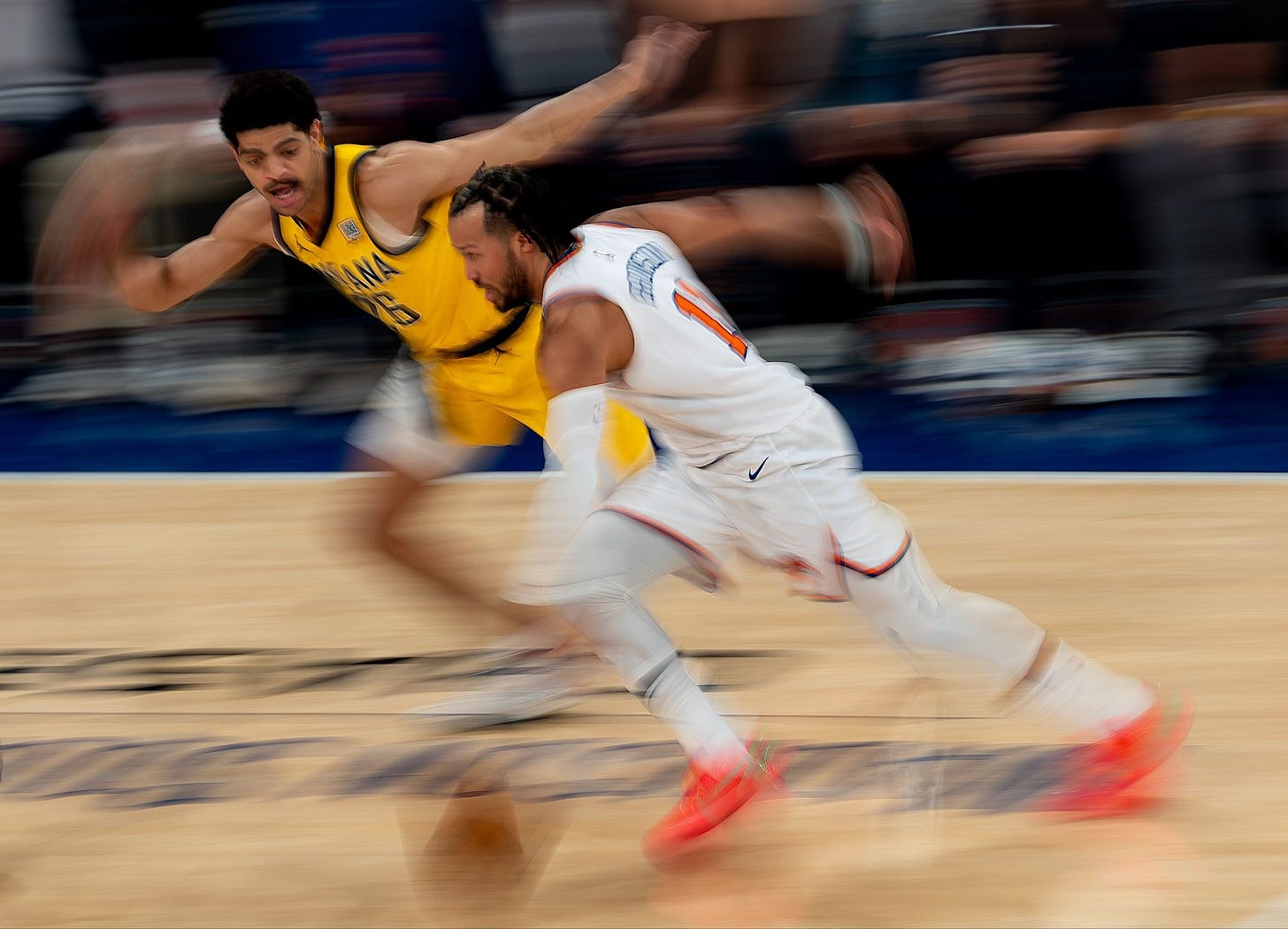You’re going to miss a lot this season
Too fast for broadcast
Rick Carlisle started coaching the Pacers a certain high-energy way, and they rode an inexpensive roster to Game 7 of the NBA Finals. After they eliminated the top team in the East, the Cavaliers’ coach Kenny Atkinson sounded the alarm about the Pacers’ incredible full-court intensity. Against the Knicks and the Cavaliers and almost everybody, the opposing stars turned to jelly by the fourth quarter because of all the work it took to get there against Carlisle’s Blur Ball.
And so of course it’s the innovation of the year, infecting, to different degrees, almost every team in the NBA. You only have to listen to the comments out of players and coaches during training camp and the preseason. Full court defense is back.
If you don’t believe, us, just watch a preseason game.
Only: here we get to the first hurdle. The players and coaches are gearing up for a style of play that the broadcast, the statistics, and the commentators simply don’t understand.
THE HERO SHOT MISSES THE HERO
Google’s AI reports “in basketball TV coverage, a ‘hero shot’ is a camera technique used to capture and highlight a player who has just made a crucial or exciting play. It’s a big part of the broadcast. In football, hero shots show us a player celebrating a sack, first down, or touchdown. Baseball has amazing slow motion hero shots, where we get to see the actual spin of the ball as it leaves a pitcher’s fingers and reaches the plate, an epic stolen base, or the magnificently powerful swing of a great hitter making contact with that spinning ball.
And in those sports, play stops to give a pause when that heroic replay can roll.
In basketball, though, the directors generally just sacrifice a little time inbounding and bringing up the ball to get those moments into the broadcast. There’s a reason NBA arenas have all those cameras under the basket. They seldom show those low angles as the play is unfolding, but after a killer score, they’ll almost always cut to a tight shot of, say, Giannis flexing. It’s a fun moment to focus tight on something moving while nothing much happens during the ho-hum part of the game when the opponents inbound the ball. It worked for a long time and maybe now not at all.
If preseason is any indication, we are in for a wild ride, because the moment after a make isn’t boring anymore. I bet broadcasters missed hundreds of exciting Pacers plays last year–steals, tipped balls, balls forced out of bounds, all kinds of stuff. If you’re a Pacer fan you know how annoying it is to have an opponent fill your screen while Quinn Buckner says something like “McConnell!!” and only later do you get to see that the Pacers’ guard made a brilliant highlight stealing the ball in the backcourt.
In last week’s Kings at Blazers game, with 3:13 left in the first quarter, the broadcast cut away from the action on the court to show a Blazers logo, and then a replay of Jrue Holiday driving to his left, and then pulling up for a floater to put the Blazers up three. But before the replay had even begun, while we were staring at a screen full of logo, the play-by-play guy was saying “now they come up with a backcourt steal! And the ball’s deflected. It’s going to be Portland ball.” That moment is lost to time. When the camera returned to live action, players were making their way to the bench for a timeout. Nine minutes into the game, this was the second exciting-sounding Blazer backcourt defensive play that didn’t make the broadcast.
The players are adjusting, hopefully the broadcasts will, too.

NO STAT IN THE WORLD
Now let’s consider Pacers’ benchwarmer Ben Sheppard. Sometimes he’d play in crunch time, more often he’d be resting down the row from Rick Carlisle. Sheppard makes roughly a quarter of an average NBA income. But when Donovan Mitchell and Jalen Brunson grabbed their knees from fatigue in the fourth quarter of playoff games, it was because they had been worn out by a whole relay team of Pacers. The Pacers throw many athletes at top opponents, it’s not a fair fight. While the super fresh Sheppard hassled Brunson in the photo above, Tyrese Haliburton, Andrew Nembhard, and Aaron Nesmith all rested and got ready to go even harder and faster when they next played Brunson. The deep-bench strategy doesn’t help the Pacers much in the first quarter before opponents get exhausted, but it pays off over time as circumstances deplete Brunsons. Sheppard deserves immense credit for helping to drain Brunson’s battery.
But the statistics we have fall generally into two categories: counting stats (which miss most of what matters about defense because we only record blocks and rebounds but not stops and denials) and plus/minus-based stats that assess how a team does when a player is on the court.
Neither has anything to say about the value of wearing out Brunson in the third quarter so the Pacers outperform the Knicks late in the fourth. But it’s a real enough strategy that most of the NBA is copying it.
Keep reading with a 7-day free trial
Subscribe to TrueHoop to keep reading this post and get 7 days of free access to the full post archives.


